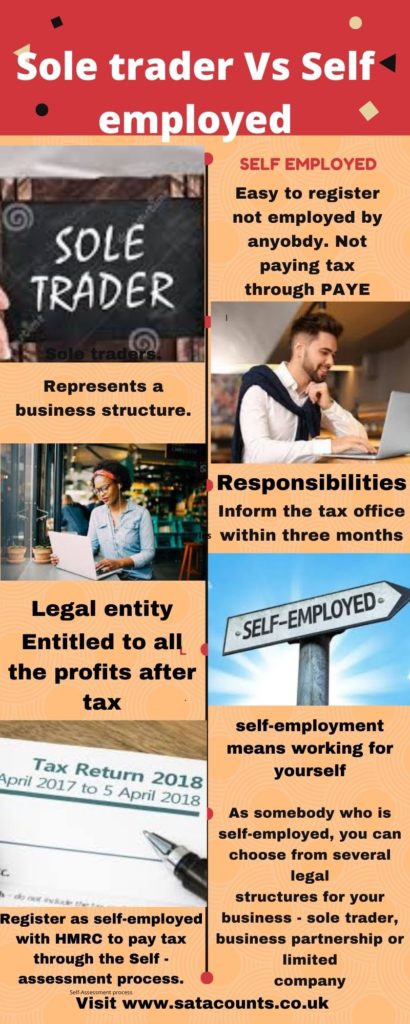Difference between self-employment and sole trader
Sole Trader Definition
A self-employed person also exclusively owns a business with a definite structure.

You are the owner of a business, a legal entity entitled to the profit after paying tax. You can have employees but remain as a sole trader; also, you need to pay the employees either using PAYE or the employees need to be self-employed. Make sure that you register with the tax office to make the tax payments. The sole trader is the simplest form of business structure but maintains an accounting system to calculate the tax liability at the end of each financial year.
What is self-employment?
If a person is self-employed, it means that person is working for himself and not for others. You are responsible for your success or failure to keep your books to make the tax office’s payment. You will make tax payments through Self-assessment rather than PAYE.
Self-employment refers to how you work rather than your business structure. A self-employed person decides precisely what work you do and when you do it, though you will not receive sick pay or holiday pay.
Difference between self-employment and sole trader
As self-employed, you can choose from several legal structures for your business – sole trader, business partnership, or limited company. A ‘sole trader’ is the sole owner of a business, meaning the owner and the industry is one combined legal and financial entity. In contrast, a business partnership works similarly but has to share between two or more co-owners. A ‘limited business,’ however, functions as its legal entity separate from the owner, so its finances are protected. Even if one person runs the business, all limited companies must register with Companies House and have a director.

Sole trader vs. self-employed
To summarise, the main difference between a sole trader and a self-employed is that ‘sole trader’ describes your business structure; ‘self-employed’ means that you are not employed by somebody else or pay tax through PAYE.
There can be a crossover between the two – sole traders are self-employed and run their businesses alone. If you are self-employed, you do not necessarily have to be a sole trader; however, you can choose from other business structures, such as a business partnership or a limited company.
Examples of self-employed professionals:
Bookkeepers who work for private clients are both self-employed and will register as sole traders
Business consultants running their own small business can register as a limited company but be self-employed
A hairdresser renting a chair in a salon on a self-employed basis, so is responsible for their taxes
A plumber who runs their own plumbing business and is the sole owner is both self-employed and a sole trader
A director of a private limited company and a self-employed person must pay tax on personal income other than the company’s profit.
